Roberts Koch's Postulates Are Used to Describe
- Suspected organism is isolated and grown in a pure culture. Wash the other two in cool soapy water scrubbing them thoroughly with a scrub brush.
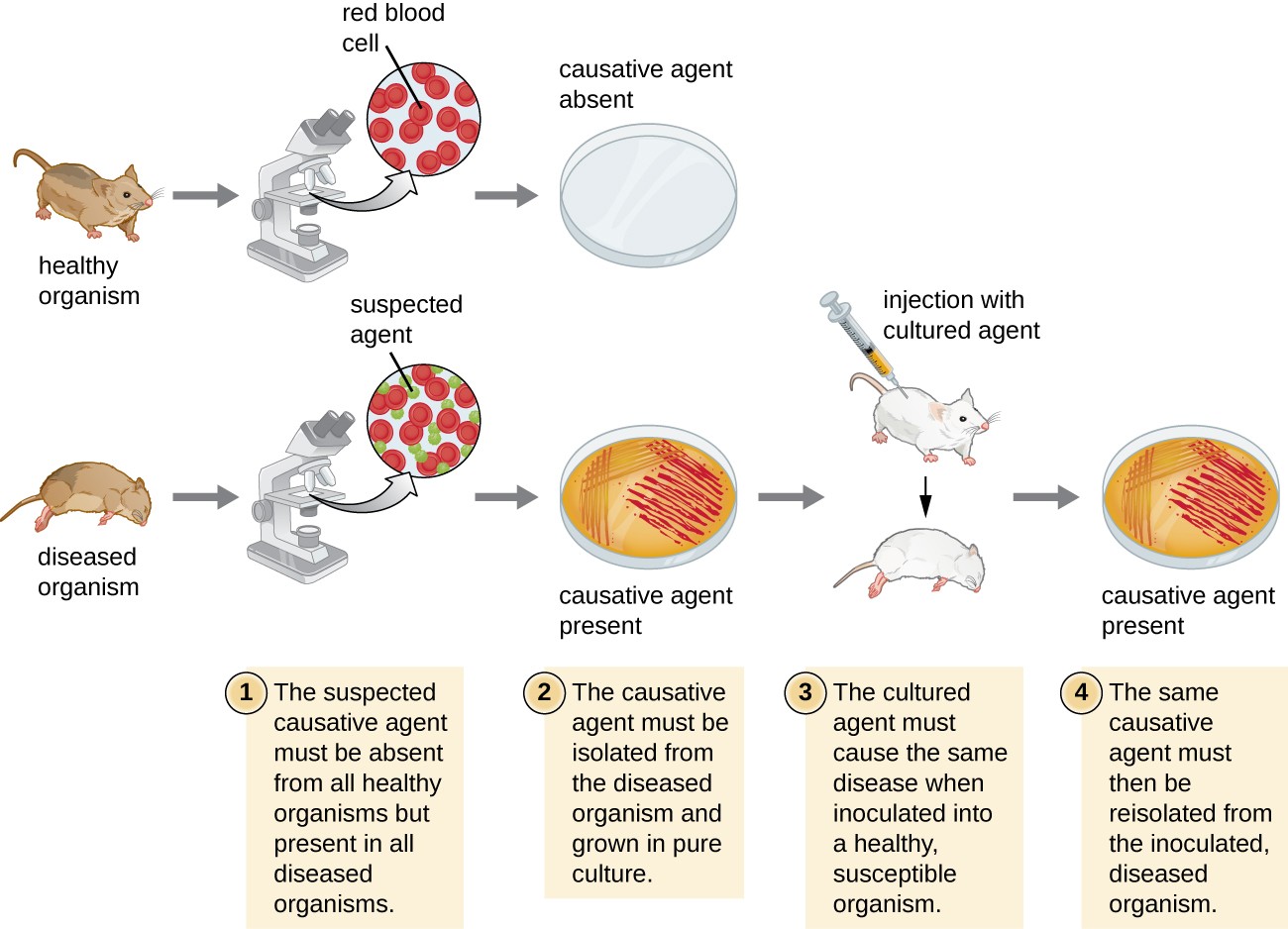
How Pathogens Cause Disease Microbiology
To review the four postulates of Koch are as.

. Koch proved that a disease-causing agent could be transferred from one organism to another and create the same illness. Procedure Clean lab tops with disinfectant or bleach solution. A specific organism must always be observed in association with the disease.
The pathogen must be isolated from the diseased host and grown in pure culture. The microorganism or other pathogen must be present in all cases of the disease 2. What are the steps of Kochs postulates.
Terms in this set Step 1. The pathogen can be isolated from the diseased host and grown in pure culture 3. Kochs postulates are regularly included in the lecture portion of microbiology courses but rarely are they demonstrated in a microbiology teaching lab.
Set one orange aside. Today Kochs postulates are taught in high school and college classrooms as a demonstration of the rigor and legitimacy of clinical microbiology. Explain two challenges you might encounter.
The pathogen from the pure culture must. The same organism must be present in every case of the disease. How those postulates can be use to prove the cause of anthrax.
The organism must be isolated from the diseased tissue and grown in pure culture in the laboratory. The organism from the pure culture must cause the disease when inoculated into a healthy susceptible laboratory organism. The pathogen from the pure culture must cause the disease when inoculated into a healthy susceptible laboratory animal.
These four basic criteria called Kochs postulates are. Explain how Kochs postulates could be used to identify SarsCoV-2 as the causative agent of COVID-19. Pathogen isolated from diseased organism and used to infect a healthy organism e Suggests that herd immunity reduces incidence of disease Looks at occurrence of disease in terms of geographical location Consideration of the intensity of symptoms of a disease.
The causality of almost all infectious diseases is based on the postulate and theories developed by Robert Koch who is rightly called the father of pathogenic microbiology and his contemporaries. The methods Koch used in bacteriology led to establishment of a medical concept known as Kochs postulates four generalized medical principles to ascertain the relationship of pathogens with specific diseases. Infection control Germ Theory Antiseptics Germ theory of Disease.
This is understandable given the logistical challenges of undergraduates working with pathogenic bacteria ethical concerns using animals and limited time constraints of a weekly lab period. A specific microorganism is always associated with a given disease. Rinse in clear running water.
The pathogen must be reisolated from. Koch determined guidelines to prove that a disease is caused by a specific organism. The pathogenic microorganism must be present in all cases of the disease.
Describe the three mechanisms pathogens may use to survive within phagocytic cells. Developed in the late 19th. - MO is present in every case of the disease but absent from healthy organisms.
The same pathogen must be present in every case of the disease. The microorganism must be isolated from a diseased organism and grown in pure culture. Kochs Postulates Introduction Koch created four guidelines to determine the causal agents of disease in humans animals and plants.
Robert Koch 1843-1910 was a German physician and scientist and the first person to prove that Bacterium is the cause of animal disease. Kochs postulates are the following. Koch died on the 27th of May 1910 of a heart.
Four criteria that were established by Robert Koch to identify the causative agent of a particular disease these include. Robert Koch was born on December 11 1843 at Clausthal in the Upper Harz Mountains in the northwestern region of Germany. Kochs postulates and its limitations.
Scientist dispute with his colleagues that there is no such as normal microbiota in human body since the population is very dynamic and is. Kochs postulate forms the very basis of the pathogenic microbiology. Used to prove the causative relationship between most bacterial pathogens and their respective diseases Molecular version of Kochs postulate 1 the genefactor should be present in all pathogenic strains of the organism and absent from non pathogenic strains.
The steps were first described by Robert Koch in 1882 and later added to by Erwin F Smith in 1905. Robert Koch and Kochs postulates. - same microorganism must be isolated again from the diseased.
The microorganism can be isolated from the diseased animal and grown in pure culture in the laboratory. The cultured microorganism should cause disease when. Explain two challenges you might encounter.
Question 13 Which best describes Kochs Postulates. The pathogen can be isolated from the diseased host and grown in pure culture. Step 1 of kochs postulates The pathogen must be present in all cases of the disease and absent from healthy animals step 2 of kochs postulates The suspected pathogen must be grown in pure culture step 3 of kochs postulates cells from a pure culture of the suspected pathogen must cause disease in a healthy animal step 4 of kochs postulates.
The aim of Kochs postulates is to confirm a diagnosis that a particular suspected organism is causing the observed disease. - Same disease must result when isolated MO is inoculated into a healthy host. The steps are as follows.
Be sure to identify all of Kochs postulates in your answer. The concept is still in use in most situations and influences subsequent epidemiological principles such as the Bradford Hill criteria. Kochs Postulates Postulate 1.
Kochs postulates four criteria that were established by robert koch to identify the causative agent of a particular disease these include. Determine the suspected pathogen is consistently associated with the disease. Kochs postulates refer to the four criteria established by Robert Koch to identify the causative agent for a particular disease.
Robert Kochs postulates published in 1890 are a set of criteria that establish whether a particular organism is the cause of a particular disease. The microorganism must be found in abundance in all organisms suffering from the disease but should not be found in. The pathogen from the pure culture must cause the disease when it is inoculated into a healthy susceptible laboratory animal.
Be sure to identify all of Kochs postulates in your answer.
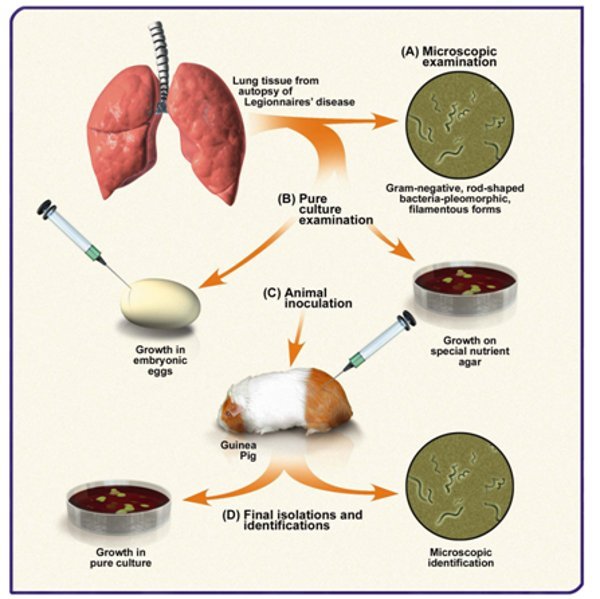
Robert Koch Creation And The Specificity Of Germs Answers In Genesis
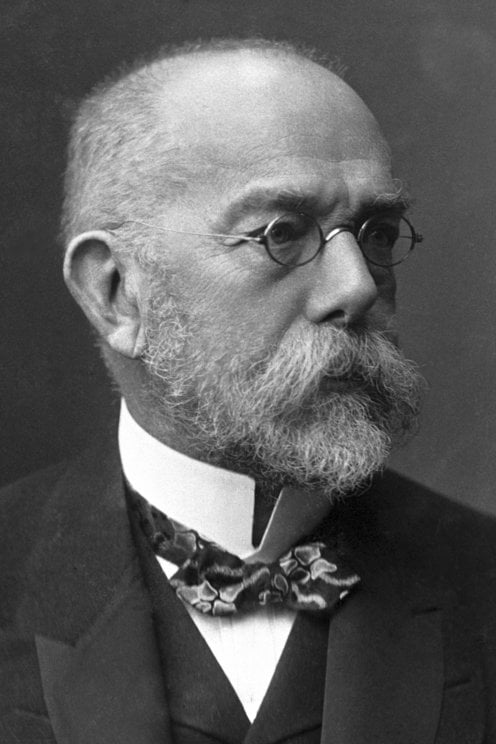
Robert Koch Biographical Nobelprize Org

Postulates Of Germ Theory By Robert Koch Download Table
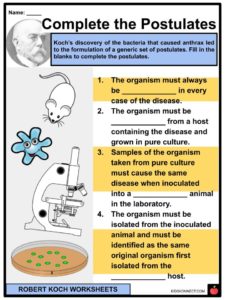
Robert Koch Facts Worksheets Child Genius Education For Kids
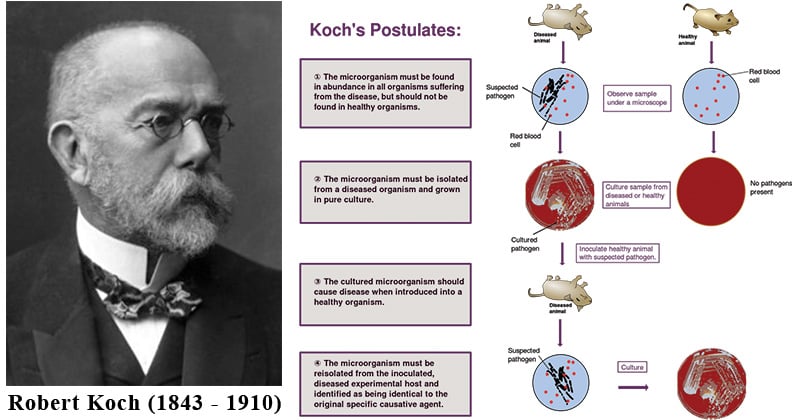
Robert Koch And Koch S Postulates

Koch S Postulates Based On Robert Koch S Lecture On The Etiology Of Download Scientific Diagram

Solved Robert Koch Was German Physician Who Identified The Bacteria Causing Anthrax And Tuberculosis His Methods Established Four Criteria That Must Be Met For A Specific Pathogen To Be Considered The Cause Of

Koch S Postulates Based On Robert Koch S Lecture On The Etiology Of Download Scientific Diagram

Professor Robert Koch 1843 1910 Robert Frank American Photography Photography

Robert Koch The Founder Of Modern Bacteriology New Scientist

Robert Koch 1843 1910 Discoverer Of Mycobacterium Tuberculosis And Download Scientific Diagram

Solved Question 5 1 Point Robert Koch S Postulates Don T Chegg Com
What Are Exceptions To Koch S Postulates Quora
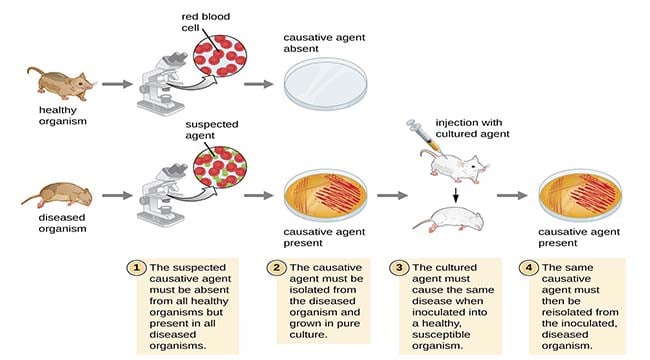
Koch S Postulates And Its Limitations

Robert Koch Facts Worksheets Child Genius Education For Kids

Robert Koch Medical Professional Biologist Biography

Louis Pasteur Robert Koch Microbiology

Robert Koch Contribution To Microbiology History Of Microbiology Youtube

Comments
Post a Comment